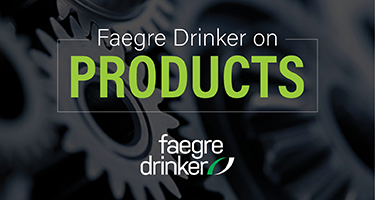The U.S. Food and Drug Administration (FDA) has issued a draft guidance for pharmaceutical companies, sponsors, and researchers sourcing Real World Data (RWD) from health records. As the FDA’s first attempt to define guidelines on sourcing RWD, the draft document provides insight into the FDA’s current thinking on the approach that companies should use to support regulatory filings for medications.
The guidance references the Framework for Real World Evidence Program, released in December 2018. The Framework is designed to regulate uses of RWD and Real Word Evidence (RWE), which are used by life sciences companies to investigate how medicines perform beyond clinical trials, and to back up clinical trial results. This draft guidance is the first of the series that have been promised by the FDA to develop the Framework. More information about the FDA Framework can be found on our blog here.
In the draft guidance, titled Real-World Data: Assessing Electronic Health Records and Medical Claims Data To Support Regulatory Decision-Making for Drug and Biological Products (“RWD Guidance”), the FDA takes steps to develop guidelines for analysis and assessment of certain RWD. RWD is data that contains information related to patient health status or the delivery of health care services. The draft guidance pertains to electronic health records and medical claims data, which are both types of RWD. Relatedly, RWE is clinical evidence regarding usage, potential benefits, or risks of a medical product derived from an analysis of RWD. The FDA has approved at least two indications for products based on RWD and RWE submissions from health records.
The Guidance covers three key areas:
- A how-to for companies on selecting and validating data sources that suitably address the study question in terms of study populations, exposure, outcomes of interest, and other factors, and the potential limitations of various data sources;
- How the company should develop and validate definitions for study design elements; and
- How companies can preserve, from origin, quality data during “accrual, curation, and transformation into the final study-specific data set.”
Part 1 of Guidance: Selection and Validation of Data Sources
For data selection, the FDA recommends that companies provide the reason they have selected a particular data type and provide background information about the health care system from which the data is pulled. They provide companies with suggestions on what to do when data is missing. Finally, the guidance provides an overview of different types of “data captures,” i.e., the process of extracting information from a source into a useable format, and considerations for each capture.
For validating RWD sources, the FDA provides suggestions on how to ensure data appropriately addresses the study question. Companies should include “conceptual definitions for important study variables, [such as] study population inclusion and exclusion criteria, exposure, outcome, and covariates.” The conceptual definitions “should reflect current medical and scientific thinking” and should include “clinical criteria [used] to define a condition . . . outcome of interest or . . covariate” and a “measurement of drug intake to define an exposure of interest.” The FDA also recommends that companies specify “how all relevant populations, exposures, outcomes, and covariates will be captured during the study period.”
Part 2 of Guidance: Development and Validation of Definitions for Study Design Elements
Companies should define and explain time periods relevant to the study (such as identifying study population, defining inclusion and exclusion criteria, assessing exposure, assessing outcome, assessing covariates, following up with patients). The clinical study protocol should provide “justif[ication] [for these] proposed time period[s]” and explain their “potential impact” on the validity of the study. For example, whether the follow-up time is sufficient to observe the occurrences of study outcomes. Protocol should also address potential temporal changes in the standard of care, availability of other treatments, diagnosis criteria, and other factors.
Next, the FDA recommends that companies describe the methods used to select the study population. To do this, companies should include in their clinical study protocol “a detailed description of methods for determining how inclusion and exclusion criteria will be implemented to identify appropriate patients . . . from the data.” Variables used to select the study population should be validated as well, using the company’s conceptual definition of the disorder or illness.
Part 3 of Guidance: Development and Validation of Definitions for Study Design Elements
The RWD Guidance suggests that researchers address procedures for characterizing data, including data accrual, data curation, data transformation, and in study specific analytic datasets. Next, the FDA recommends that companies document data quality procedures in their Quality Agreement and Quality Control Plans (QA/QC). Companies can do this by addressing “construction of analytical data,” how they will handle “quality control issues during analysis,” and providing information about “differing levels of data quality” that could impact the study.
Finally, the FDA discusses the importance of documenting data management processes, and instructs companies to “thoroughly assess . . . [a]ll manual and automated data retrieval and transformation processes” during all stages of the process.” To “facilitate FDA review,” the FDA recommends that all submitted programs “be thoroughly annotated with comments that describe the intent or purpose of each data management and analysis step.”
Conclusion
The FDA has stressed the guideline is only preliminary. It has invited the public to submit comments though November 29, 2021.
Faegre Drinker’s life sciences industry group will monitor RWD and RWE guidelines, and will provide updates as they become available.
The material contained in this communication is informational, general in nature and does not constitute legal advice. The material contained in this communication should not be relied upon or used without consulting a lawyer to consider your specific circumstances. This communication was published on the date specified and may not include any changes in the topics, laws, rules or regulations covered. Receipt of this communication does not establish an attorney-client relationship. In some jurisdictions, this communication may be considered attorney advertising.

